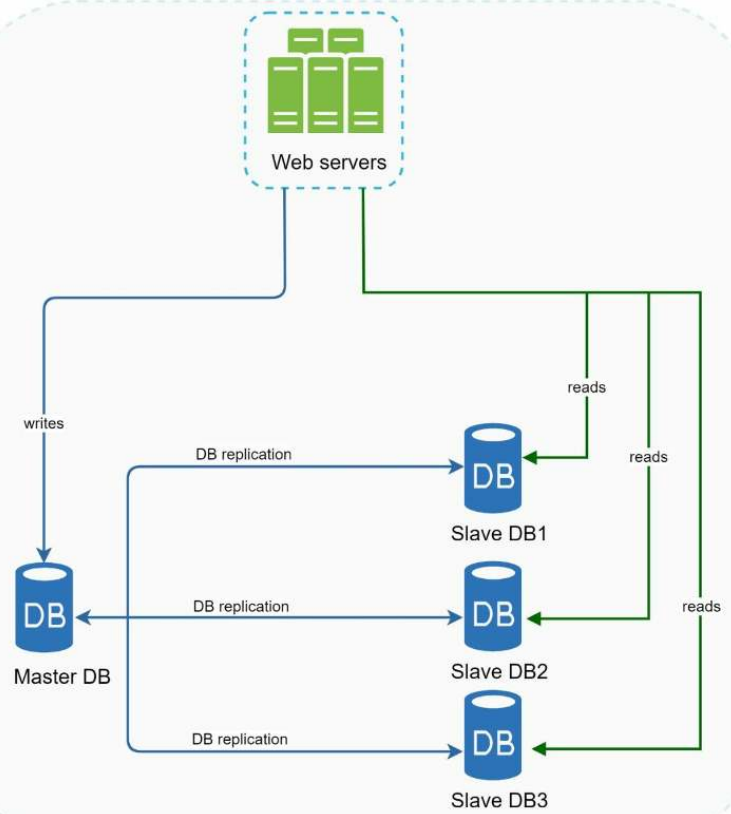What is Replication?
-
Keeping a copy of the same data on multiple machines. Each node that stores the copy is called Replica.
Advantages of Replication
-
1. Parallel Processing: Master: Handles all write operations, Slaves: Handles all read operations
2. Reliable(Data is served even DB crashes, or some DB goes down under load): Data will be served from other slave
3. Highly available(Even if some of DBs are down, client will get response): Since some slaves will be up.
Types of Replication
| Type | Meaning | Digram |
|---|---|---|
|
Master/Slave or Leader/Follower |
Master/Leader: 1 node is designated as master. Client does RW operations with master. Session is stored in
master's DB. Then slaves read from it. Slaves: Read Only. slave database gets copies of the data from the master database. All slaves replicate data from most updated slave via replication log. Advantage 1. Parallel Processing: Read(Slaves), Write(Master) is supported paralally 2. Reliable: Since multiple copies of data is maintained 3. Highly availabile: Disadvantage a. Logic is required to promote slave to master(when master fails) b. If high number of slaves, more write operations can lead to replication lag. |

|
| Master/Master or Active/Active or Leader/Leader |
There are 2 or more leader nodes. Client can write to any 1 of leader.
Other leaders will act as slave and read all data from present leader. |